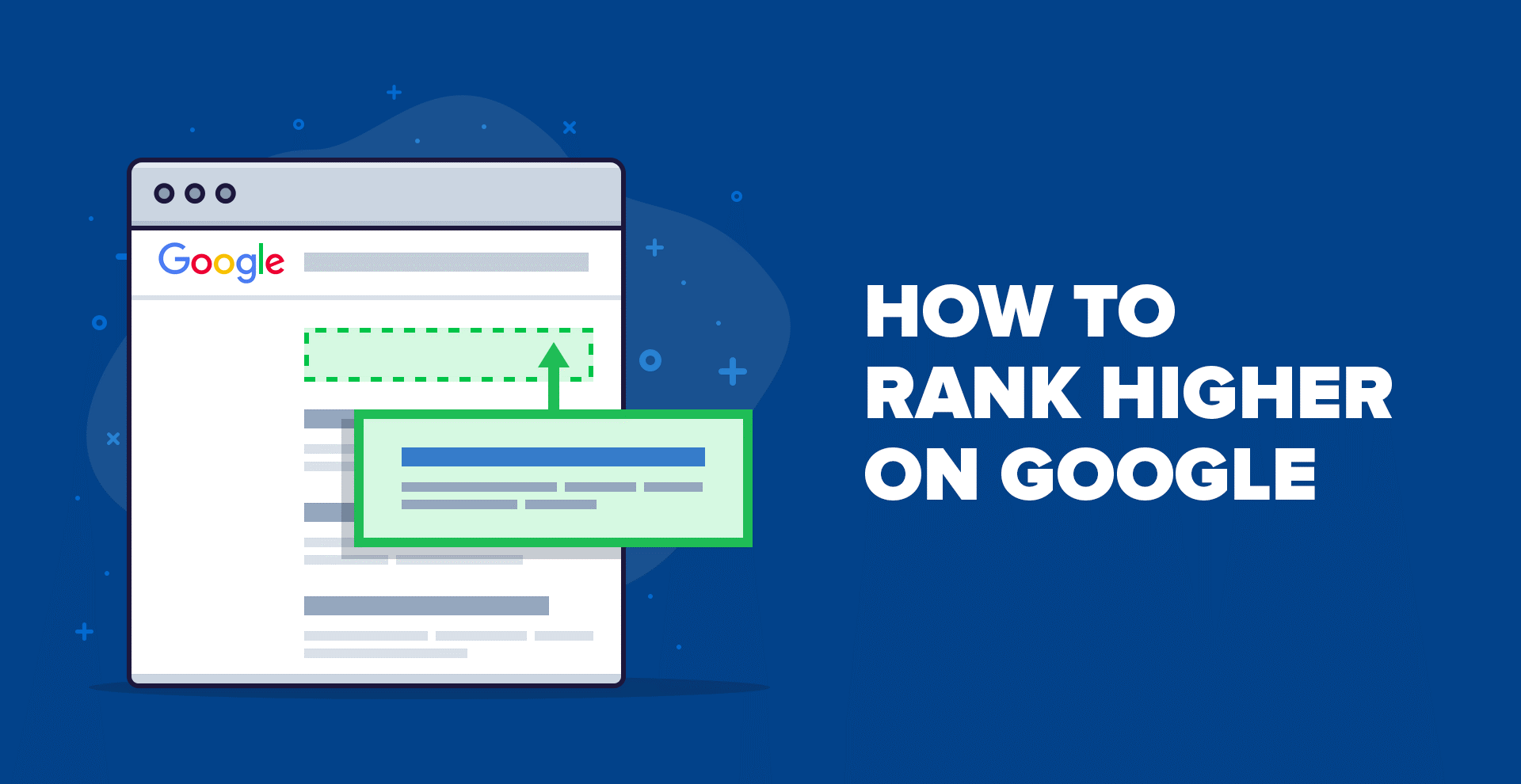
In today's competitive online marketplace, simply having an eCommerce store isn't enough. To truly succeed, your products need to be easily discoverable by potential customers. This is where eCommerce Search Engine Optimization (SEO) comes into play. eCommerce SEO is the strategic process of optimizing your online store to achieve higher rankings in search engine results pages (SERPs), which in turn leads to increased organic traffic and, ultimately, more sales.
Unlike traditional SEO, eCommerce SEO places a strong emphasis on product pages, categories, and the overall user journey from search to purchase. By focusing on the unique aspects of online retail, businesses can attract highly qualified visitors who are actively searching for the products they offer. This guide provides a foundational understanding of eCommerce SEO, outlining the essential steps beginners can take to improve their store's visibility, attract targeted traffic, and drive conversions.
Key Insights for eCommerce SEO Beginners
◀ Strategic Keyword Research: Focus on high-intent, product-specific, and long-tail keywords to capture customers actively looking to buy.
◀ Comprehensive On-Page Optimization: Craft compelling product titles, descriptions, and meta tags while ensuring descriptive URLs and optimized images with alt text.
◀ Robust Technical Foundation & Site Structure: Build an intuitive, mobile-friendly website with fast loading speeds, a logical hierarchy, and proper use of canonical tags and XML sitemaps to ensure crawlability and a superior user experience.
The Indispensable Role of SEO in eCommerce Growth
SEO is not merely a marketing tactic; it's a fundamental pillar for the sustainable growth of any online store. Its importance stems from several critical factors that directly impact an eCommerce business's bottom line:
◀ Cost-Effectiveness: While paid advertising offers immediate visibility, organic traffic driven by SEO is a long-term, cost-effective strategy. Once your pages rank, they continue to attract visitors without continuous per-click expenditure.
◀ Targeted Traffic: SEO brings qualified leads. Users actively searching for products are often further along in their buying journey, making them more likely to convert.
◀ Brand Authority and Trust: High rankings on SERPs signal to users that your brand is authoritative and trustworthy. Google's algorithms prioritize credible sources, and ranking well builds consumer confidence.
◀ Sustainable Growth: Unlike transient advertising campaigns, the effects of SEO compound over time. Continuous optimization leads to sustained visibility and a steady influx of potential customers.
◀ Competitive Advantage: In a crowded market, effective SEO can differentiate your store, allowing you to stand out against competitors and capture a larger share of the search market.
Understanding these benefits underscores why a robust eCommerce SEO strategy is not just recommended but essential for success in 2025 and beyond.
Mastering eCommerce SEO: A Step-by-Step Approach
Embarking on your eCommerce SEO journey can seem daunting, but by breaking it down into manageable steps, you can systematically improve your store's performance. Here's a comprehensive guide to help beginners navigate the landscape of eCommerce SEO.
Visual representation of the benefits of eCommerce SEO.
Strategic Keyword Research: The Foundation of Discoverability
The first and most crucial step in eCommerce SEO is identifying the words and phrases your potential customers use when searching for products like yours. This isn't just about finding popular terms; it's about uncovering buying-intent keywords.
Identifying High-Intent Keywords
◀ Product-Centric Terms: Focus on keywords directly related to your products, including features, specifications, and brand names.
◀ Long-Tail Keywords: These are longer, more specific phrases (e.g., "best running shoes for flat feet" instead of "men's shoes"). They often have lower competition and higher conversion rates because they indicate a user's specific need.
◀ Competitor Analysis: Analyze the keywords your competitors are ranking for to uncover new opportunities.
◀ Search Suggestions: Pay attention to auto-complete suggestions and "people also ask" sections in search results for insights into related queries.
By understanding the varied ways customers describe your products, you can strategically integrate these keywords into your site content to capture more search traffic.
Optimizing Product Pages: Your Store's Conversion Hub
Product pages are the heart of your eCommerce store and a critical component of your SEO headless commerce strategy. Effective optimization here directly impacts visibility and conversion rates.
Crafting Compelling Product Content
◀ Product Titles: Incorporate target keywords naturally at the beginning of your product titles. Keep them descriptive and concise (ideally under 60 characters for optimal display in SERPs).
◀ Unique Product Descriptions: Write detailed, compelling, and unique descriptions that go beyond manufacturer specifications. Highlight benefits, use cases, and answer potential customer questions. Longer descriptions often perform better.
◀ Descriptive URLs: Use clear, concise, and keyword-rich URLs (e.g., yourstore.com/category/product-name). Avoid complex strings of numbers or symbols.
◀ Image Optimization: Use high-quality images and optimize their file size for faster loading. Crucially, include descriptive alt text for all product images. This improves accessibility and helps search engines understand the image content.
◀ Meta Tags: Craft engaging meta titles and meta descriptions that include your primary keywords. These snippets appear in SERPs and influence click-through rates.
Additionally, encourage and display customer reviews. User-generated content adds unique, keyword-rich text to your pages, builds social proof, and enhances trust, all contributing to better SEO and conversion.
Example of an SEO-optimized product description.
Building a Robust Site Structure and Technical SEO Foundation
A well-structured website is essential for both user experience and search engine crawlability. Technical SEO ensures search engines can efficiently find, crawl, and index your store's content.
Designing an Intuitive Site Architecture
◀ Logical Hierarchy: Organize your products into clear categories and subcategories. A hierarchy like Homepage > Category Page > Product Page makes navigation easy for users and search engines.
◀ Internal Linking: Implement a strong internal linking strategy. Link related products, category pages, and relevant blog posts. This distributes "link juice" throughout your site, boosting page authority and helping search engines understand content relationships.
◀ Crawlability: Ensure your site is easily crawlable by search engine bots. Use an XML sitemap to list all important pages and submit it to Google Search Console.
Essential Technical Optimizations
◀ Site Speed: Optimize your website for fast loading times. Slow speeds lead to higher bounce rates and lower rankings. Compress images, leverage browser caching, and use a reliable hosting provider.
◀ Mobile-Friendly Design: Your store musst be responsive and provide an excellent experience on all devices, especially mobile, as a majority of online shopping now occurs on smartphones.
◀ HTTPS Protocol: Ensure your site uses HTTPS (secure protocol). This is a ranking factor and builds trust with customers by encrypting data.
◀ Canonical Tags: Properly use canonical tags to prevent duplicate content issues, especially prevalent in eCommerce due to faceted navigation (e.g., filtering products by color or size).
◀ Schema Markup: Implement structured data (Schema Markup) for product information (price, reviews, availability). This helps search engines understand your content better and can lead to rich snippets in SERPs, increasing visibility.
Exploring Key eCommerce SEO Facets with a Mind Map
To provide a clear, comprehensive overview of the interconnected elements within eCommerce SEO, the following mindmap visually organizes the core strategies and their subcomponents. This diagram illustrates how each aspect contributes to the overall goal of improved search visibility and increased sales, emphasizing the holistic nature of a successful SEO approach.
Content Creation and Authority Building
While product pages drive immediate sales, creating valuable informational content attracts potential customers earlier in their journey and builds your site's authority.
Expanding Your Content Horizon
◀ Blog Posts and Guides: Publish articles related to your products, industry trends, or common customer questions. Examples include "How to Choose the Best [Product]" or "5 Ways to Use [Product]". This targets informational keywords.
◀ Buying Guides & FAQs: Comprehensive buying guides help customers make informed decisions and establish your expertise. FAQ pages address common queries directly, signaling relevance to search engines.
◀ Content Velocity: Regularly publishing fresh, high-quality content signals to search engines that your site is active and relevant. Aim for consistent updates to maintain and improve rankings. This type of content not only drives additional organic traffic but also serves as valuable resources that can earn quality backlinks, further boosting your site's domain authority.
Building Quality Backlinks and Enhancing Off-Page SEO
Backlinks – links from other reputable websites to your store – are a crucial ranking factor. They act as "votes of confidence," signaling to search engines that your site is trustworthy and authoritative.
Strategies for Acquiring Backlinks
◀ Content Promotion: Share your valuable blog posts and guides with relevant industry websites, influencers, or communities.
◀ Product Reviews/Mentions: Encourage mentions or reviews from authoritative bloggers, industry publications, or news outlets.
◀ Broken Link Building: Find broken links on other websites in your niche and suggest your relevant content as a replacement.
Beyond backlinks, managing online reviews on platforms like Google My Business and product review sites, and maintaining an active social media presence, contribute to a stronger overall digital footprint, indirectly influencing SEO by increasing brand visibility and trust.
Continuous Monitoring and Refinement
SEO is not a one-time task; it's an ongoing process. Search engine algorithms evolve, competition changes, and user behavior shifts. Consistent monitoring and adaptation are key to sustained success.
Tools and Tactics for Ongoing Optimization
◀ Google Search Console: Essential for monitoring your site's performance in Google search results, identifying crawl errors, checking indexation status, and understanding keyword performance.
◀ Google Analytics: Track traffic sources, user behavior (time on site, bounce rate, pages per session), and conversion rates to identify areas for improvement.
◀ Keyword Ranking Trackers: Monitor your target keyword rankings to assess the effectiveness of your optimization efforts.
◀ A/B Testing: Test different versions of product pages, calls to action, or content layouts to see what resonates best with your audience and drives conversions.
◀ Stay Updated: Keep abreast of the latest SEO trends and algorithm updates from Google and other search engines.
Regularly analyzing data and making informed adjustments to your strategy will ensure your eCommerce store remains competitive and continues to attract qualified traffic.
Visualizing eCommerce SEO Efforts: A Data-Driven Perspective
To further illustrate the multifaceted nature of eCommerce SEO, the following charts provide a comparative overview of perceived effort levels for different SEO strategies and their potential impact on traffic and sales. These visualizations are based on synthesized insights from various expert sources, offering a strategic perspective on where to allocate resources.
Comparative Effort-Impact Radar Chart for eCommerce SEO Strategies
This radar chart provides an analytical perspective on various eCommerce SEO strategies, evaluating them across several dimensions: Keyword Relevance, On-Page Optimization Depth, Technical Implementation Complexity, Content Velocity, and Backlink Acquisition Difficulty. Each axis is rated on a scale of 1 to 5, where 5 represents a high degree of the characteristic. This helps visualize the relative commitment and strategic importance of each area.
Projected Impact of Key SEO Pillars on Traffic and Sales
This bar chart evaluates the estimated impact of core eCommerce SEO pillars on both organic traffic generation and direct sales conversions. Each pillar is scored out of 10, with higher scores indicating a greater projected positive influence. This chart highlights which aspects of SEO tend to yield the most significant returns in terms of attracting visitors and converting them into customers.
Essential eCommerce SEO Best Practices Summary
For a quick reference, here's a table summarizing the foundational eCommerce SEO best practices, categorized by their primary area of impact. Implementing these systematically will lay a strong groundwork for your online store's search visibility and sales performance.
SEO Category | Best Practices | Key Benefit |
Keyword Strategy | Conduct thorough keyword research, focusing on high-intent and long-tail keywords. | Attracts qualified traffic actively searching for products. |
On-Page Optimization | Optimize product titles, descriptions, URLs, and meta tags with relevant keywords. Use unique content and alt text for images. Attracts qualified traffic actively searching for products. Improves | Improves relevance for search engines and click-through rates for users. |
Site Structure & UX | Create an intuitive site hierarchy, clear URLs, and implement robust internal linking. Ensure mobile-friendliness and fast loading speeds. | Enhances user experience and aids search engine crawling and indexing. |
Technical SEO | Implement HTTPS, use canonical tags, create XML sitemaps, and optimize for page speed and mobile responsiveness. Integrate Schema Markup. | Ensures search engines can efficiently discover, crawl, and understand your content, preventing indexing issues. |
Content Marketing | Publish relevant blog posts, guides, and FAQs: regularly update content. | Attracts additional organic traffic, builds authority, and engages potential customers. |
Off-Page SEO | Acquire quality backlinks from authoritative sites. Manage online reviews and maintain social media presence. | Boosts domain authority, trustworthiness, and brand awareness. |
Monitoring & Analysis | Regularly track performance using tools like Google Search Console and Analytics. Adapt strategies based on data. | Ensures continuous improvement and competitive advantage. |
Conclusion
Embarking on the journey of eCommerce SEO is a strategic imperative for any online store looking to thrive in the digital landscape. By systematically implementing keyword research, optimizing product pages, building a robust technical foundation, fostering content creation, and cultivating quality backlinks, beginners can significantly enhance their store's visibility and attract a consistent flow of qualified traffic. Remember, SEO is an ongoing commitment, not a one-time fix. Consistent monitoring, adaptation to algorithm changes, and a relentless focus on user experience will ensure long-term success, transforming organic search into a powerful engine for increased sales and sustainable growth for your eCommerce business.


